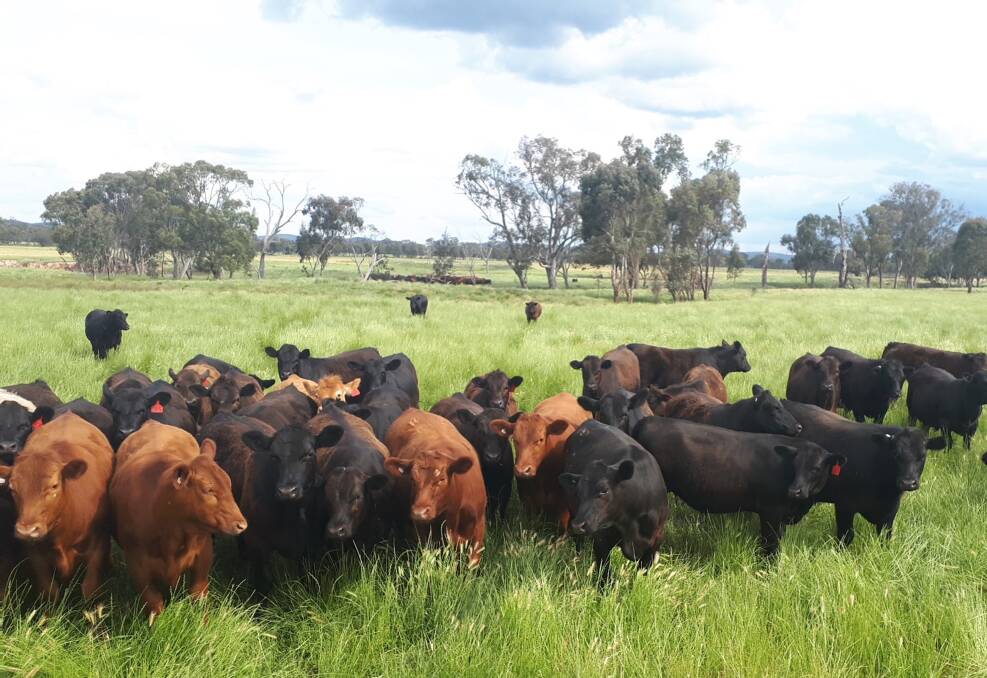Limousin-sired calf demand growing

This is branded content for Australian Limousin Breeders' Society.
LIMOUSIN bloodlines are boosting profit in a range of commercial operations across the country, thanks to hybrid vigour and improved carcase quality, with producers reporting high demand for Limousin-sired calves, from restockers through to processors.
Producers are getting results with Limousin bulls, and the breed is now being used to increase profitability in all operations, from vealers to feeder steers and the supermarket trade.
Yield is a major reason why David York uses Limousin sires in his 1000-breeder operation and on-farm feedlot run over multiple properties east of Roma, Queensland.
"We were buying different breeds and types of cattle for the feedlot," Mr York said.
"Pretty quickly we worked out that the Limousin-cross cattle were outperforming all other breeds in the feedlot, so when it came to selecting bulls to put over the cows in order to improve them, Limousins were an obvious choice.
"We are regularly having Limousin cross cattle yield up to 59 per cent.
"Limousins provide us flexibility in our markets with a carcase that finishes well with an above average yield."
For Jock Agnew, who runs 90 breeders at The Donga, west of Penola in South Australia, being able to turn off calves early is the big benefit of the Limousin breed.
"We aim to turn our calves off at 400 to 430 kilograms at 10 to 12 months, straight off their mothers.
"Sometimes the season doesn't let us do that, but by using Limousins we know we are giving ourselves the best chance of achieving our goals."
Central Queensland crossbreeder Geoff Pedersen is turning off about 1200 head a year from his 1400-breeder production, aiming for a carcase weight between 370kg and 400kg.
His reason for using Limousin genetics was to improve carcase quality, in particular, fat levels, and he's been able to increase profitability due to the Limousin infusion, with higher yields and more cattle meeting the grid specifications.
"The key trait we were looking to improve was to reduce the level of fat in our cattle at the carcase weights we are turning them off at," Mr Pedersen said.
"The straight Santa Gertrudis cattle often fall outside the grid with too much fat, whereas the Limousin-cross cattle hit the grid every time.
"The Limousin-cross bullocks always yield 3pc to 4pc better than the straight Santa Gertrudis-bred bullocks.
"At an average liveweight of 750kg going onto the truck, that can mean an additional 30kg of yield for the Limousin-cross cattle."
Rockalen Pastoral Company is another commercial production benefiting from the increased growth rates and carcase yield of Limousin genetics.
The business, run by Anthony and Tanya Allen near Wilalooka in SA, includes 900 British-bred cows, with about 600 joined to Limousin sires and the rest to Angus.
The Allens originally started buying Limousins more than 25 years ago when they were producing vealers.
At the time, they were looking for increased muscle growth and yield, but he's stayed with the breed despite changing to a different market, finishing to supermarket trade weights.
"I've been happy to stick with Limousins because of their high yield and hybrid vigour," Mr Allen said.
"While a lot of people have shifted to Angus and kept with Angus for feeder steer production, we've gone a little bit different ... I wanted to sell a carcase that was ready to be killed."
The increased dressing percentages mean the progeny can be killed at lower liveweights.
This, in combination with the improved growth rates, allows the family to turn off Limousin-sired animals at 280kg to 300kg carcase weight as early as 12 to 13 months of age, while the Angus-sired calves are sold as weaners.
"The Angus progeny don't finish as well due to the hybrid vigour and yield of the Limousins," Mr Allen said.
The next step in Limousin genetics
While the Limousin breed has always been known for its ability to add muscle and carcase traits, there's another opportunity for the breed to add value through the F94L gene mutation, also known as at the profit gene.
The mutation of the myostatin gene, which has been widely studied for its role in skeletal muscle development and homeostasis, could be the answer for producers looking to increase profitability while maintaining production traits.
The myostatin gene, which is responsible for double muscling found in several cattle breeds, wasn't suitable for commercial production as is decreased female fertility, increased birthweight and decreased longevity due to increased susceptibility to respiratory illness and fatigue.
However, the F94L mutation, causes partial loss of myostatin function so animals carrying it have a more intermediate phenotype with increased muscling, carcase characteristics and meat yields with no adverse effects on birthweight, calving ease or female fertility compared to the double muscling genotypes, according to Limousin Australia breed advancement officer Henry Hickson.
"The increased muscling in double muscling mutations as seen in the Belgian Blue are due to a combination of hypertrophy (larger individual muscle fibres) and hyperplasia (increased number of muscle fibres)," Mr Hickson said.
"The more intermediate influence of the F94L mutation causes hyperplasia in animals with the A allele so they have an increased number of muscle fibres which are similar size to genotypes without the F94L mutation.
"Since muscle fibres aren't larger eating quality isn't negatively influenced and the F94L genotype actually causes shear force to decrease, increasing eating quality.
"The combination of increased carcase characteristics and eating quality makes the F94L mutation a useful gene for commercial cattle producers."
The F94L gene, which has also been named the profit gene, has the potential to add enormous value to commercial cattle operations, Mr Hickson said.
"The advantage that the F94L mutation provides in dressing percentage through increased muscling means that animals can be killed at lower liveweights than other cattle targeting the same carcase weights."
This is branded content for Australian Limousin Breeders' Society.


